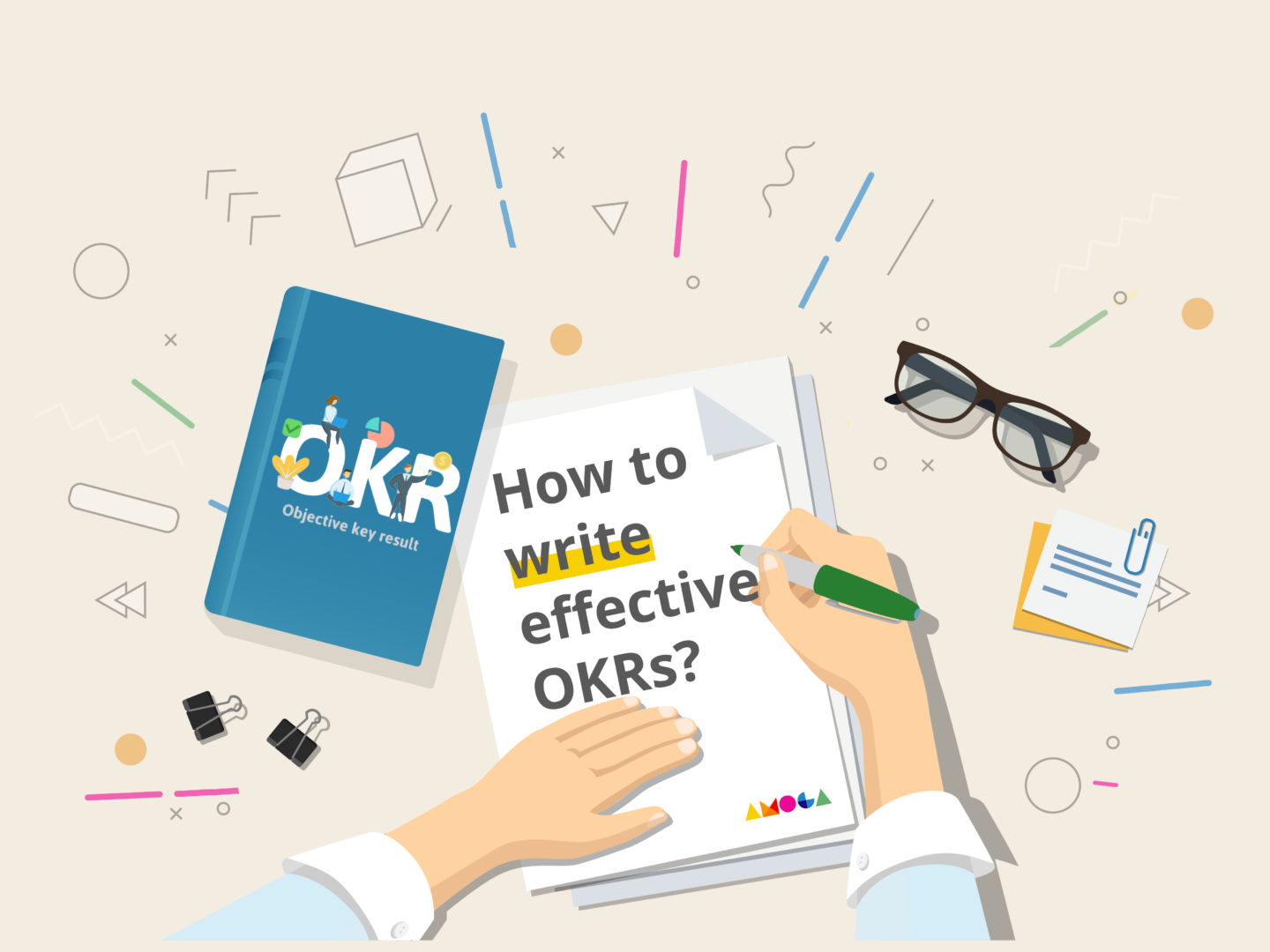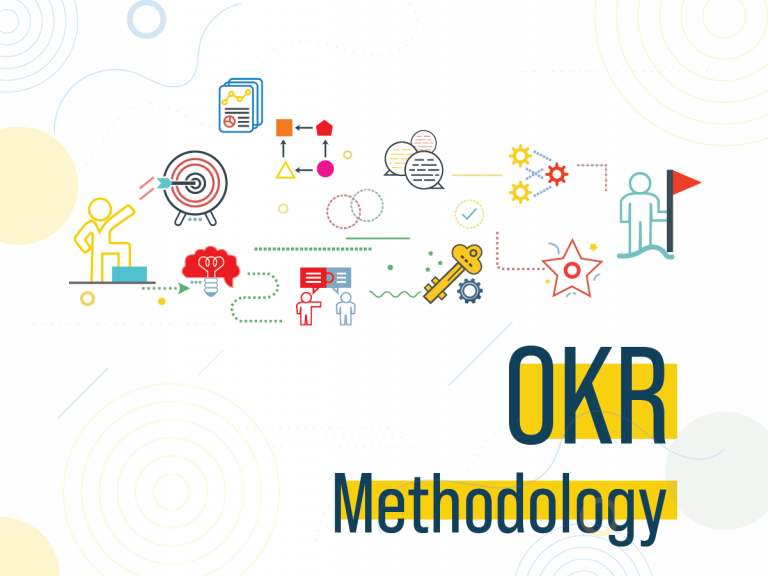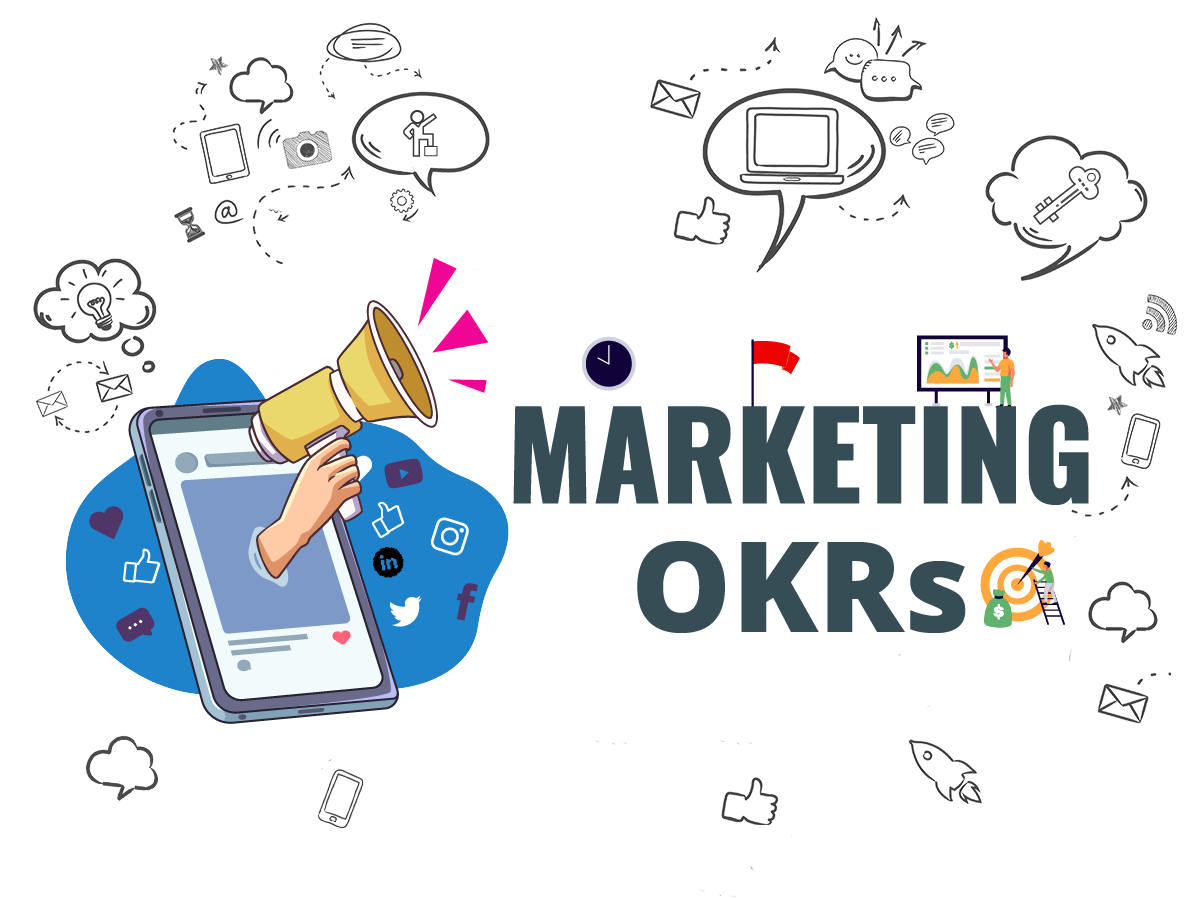The OKRs have helped us multiply our growth by 10 times. They have helped us to make our ambitious mission to organize the world’s information more achievable. They helped me and the rest of the company meet deadlines and measure what mattered most. – LARRY PAGE, co-founder of Google.
Faced with the success of Google, many companies adopted the OKR method thereafter. So, what exactly is the OKR method?
OKRs stands for Objectives and Key Results. To put it simply, OKR is a goal-setting framework that helps organizations achieve their goals in a measurable way and creates clarity and aligns everyone in the organization towards top business goals to drive better results.
In the book Measure What Matters, John Doerr explains that goals and key results are the yin and yang of efficiency. A goal without key results is just a desire. And key results without a goal are just to-do lists without any output. So, both need to be effective.
When getting started with the OKR framework, it is common to get questions like “what is a useful guide to OKRs?” “how to write a good OKR?” or “how to set measurable key results,” or ” how do I get a good example of a well-written OKR?” To answer these questions, we have created a set of examples on how to set OKRs, so that you can apply them as you start with your own team OKRs.
How should an OKR be?
As said earlier, Google is a benchmark in designing objectives and key results. According to it, the attributes that should characterize OKRs are:
- Quantifiable – Whether it’s a number, date, or percentage, KRs (key results) must be measurable and time-bound, or else they are ineffective.
- Qualified – At the end of the term established for the OKR, you must rate their performance. For example, Google measures the key result completion on a scale of 0-1. It is 0 when “the goal has not been achieved” and 1 when “The goal is achieved.” Since OKRs should be ambitious, getting 1 on each key result is not expected; hitting 0.6-0.7 indicates your OKRs are appropriately ambitious. This way, they rate the progress of their goals, and the results are taken as a reference to formulate the next objectives.
- Public – Within the organization or company itself, OKRs must be public. This way, the OKRs maintain transparency and alignment with every department, enabling early detection of the problem. Moreover, it also builds accountability and a sense of urgency on critical tasks.
- Ambitious – To see the team’s true potential, sometimes it is necessary to set aggressive goals. The team will encounter difficulties and put extra effort into achieving the set goals. Remember, it is better to fall short than to reach the goal without struggling.
10+ Team OKRs examples – Guide to OKRs
Now that you have some insight into the general guide to OKRs, we have shared some OKR examples below for different departments. You can use these OKR examples as guidance and jump-start your own team OKRs.
Marketing OKRs
Example 1
Objective: Create awareness of the launched product.
- Key Result 1: Get 50 product reviews by [date].
- Key Result 2: Launch a paid social media ad campaign by[date].
- Key Result 3: Make three videos of the product for our YouTube channel and social networks by [date].
Example 2
Objective: Bring an incredible amount of new inbound leads to the site.
- Key Result 1: Increase monthly website visitors from 10k to 20k by the end of [month].
- Key Result 2: Increase Domain Rating (DR) score from 45 to 55 in SEMrush by [date].
- Key Result 3: Decrease homepage bounce rate from 75% to 50% by the end of 1st month of Q2.
Example 3
Objective: Improve our website and increase conversions.
- Key Result 1: Increase site visitors by 7% every month (total 21% for the quarter Q2) by [date].
- Key Result 2: Create 10 new lead magnets before the end of the second quarter [Q2].
- Key Result 3: Improve landing page conversions by 10% every month till the end of Q2.
Sales teams OKR
Example 4
Objective: Generate more scalability in sales.
- Key Result 1: Increase the number of leads generated by 80% by [date].
- Key Result 2: Decrease the sales cycle by 35% before [month].
- Key Result 3: Generate more upsell and/or cross-sell by 20% by [date].
Example 5
Objective: Achieve quarterly revenue of 300 million INR.
- Key Result 1: Earn 50 million INR in revenue during the first month of Q2 for a new product.
- Key Result 2: Reduce the sales cycle from two months to 19 days by [date].
- Key Result 3: Sell the new product to 40% of current customers by the end of quarter[Q2].
Example 6
Objective: Offer an excellent after-sales experience for customer retention.
- Key Result 1: Bring the customer satisfaction score above 90% by [date].
- Key Result 2: Reduce request response time to less than 3 days before the starting of [month].
- Key Result 3: Retain the current customer base by 90% before the end of quarter [Q2].
Customer success OKRs
Example 7
Objective: Provide a top-notch customer support experience to increase customer base.
- Key Result 1: Achieve a 90% Customer Satisfaction Score (CSAT) all urgent tickets by [date].
- Key Result 2: Start solving 100% critical issues within 1 hour from the [month].
- Key Result 3: Resolve 95% of medium severity support tickets in less than 24 hours from [date].
- Key Result 4: Each support representative must maintain a personal CSAT of 95% or higher till the end of [Q2].
Example 8
Objective: Ensure proper support to the customer success team members to succeed and achieve company-wide goals.
- Key Result 1: Conduct 2 product training sessions bi-weekly from the start of [date/month].
- Key Result 2: Increase task success rate from 70% to 90% by [ date].
- Key Result 3: Successfully onboard 10 new customers per month till the end of Q2.
Example 9
Objective: Improve QA procedure to leverage the testing processes.
- Key Result 1: Have 85% bug-free solutions by [date].
- Key Result 2: Conduct 4 more test sessions per week with target users by the end of Q2.
- Key Result 3: Decrease testing cycle average time by 50% by [date].
Engineering team OKRs
Example 10
Objective: Improve QA procedure to leverage the testing processes.
- Key Result 1: Have 85% bug-free solutions by [date].
- Key Result 2: Conduct 4 more test sessions per week with target users by the end of Q2.
- Key Result 3: Decrease testing cycle average time by 50% by [date].
Example 11
Objective: Enhance the quality of the product.
- Key Result 1: Speed up the code coverage from 40% to 75% by [date].
- Key Result 2: Reduce the QA rejections per function, on average, from 2.5 to 1 by [date].
- Key Result 3: Lessen the average number of recently reported bugs from 70 to 30 by [date].
Example 12
Objective: Accelerate the development team’s speed to create more value for our customers.
- Key Result 1: Increase sprint speed from 40 to 65 by [date].
- Key Result 2: Reduce the average number of bugs per feature from 3 to 1 by [date].
- Key Result 3: Reduce average lead time by 25% by the end of [month].
OKR Writing Tips
- Define clear and specific goals – While setting OKRs, there should be no complications or ambiguities. The goals you define must be specific, and this also applies to both the objectives and the key results. Then only the team members’ will be able to understand what is wanted and will stay aligned to achieve the goal.
- Involve the team in the creation of objectives – It is crucial to work together while setting the objectives. Therefore, these should not be established only by managers or leaders, but rather the entire team should be involved.
- Establish relatively short deadlines for Key Results – For the process to be manageable by the team efficiently, it is recommendable to set shorter deadlines instead of having such extended deadlines for the achievement. It is best to set reasonable deadlines, for instance, quarterly or semi-annually.
- Assess results constantly – Even if the achievement period is 3 or 6 months, it is good to constantly evaluate the results to ensure the consistency of the work. It can be done weekly, for example, so you can make quick adjustments as needed before moving on.
To Conclude
Writing good, well-structured, and effective OKRs is not easy. Have the patience to run multiple iterative improvement cycles, and you will see what success looks like! Also, you can use OKR management software which facilitates access for all employees to OKRs, encouraging teams’ engagement, motivation, and performance.





